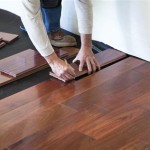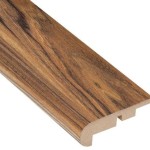Staining Oak Wood Floors: A Comprehensive Guide
Oak wood flooring remains a popular choice for homeowners and builders due to its durability, versatility, and natural beauty. Staining oak floors allows for a customization of the wood's appearance, enhancing its grain patterns and achieving a desired aesthetic that complements a room's overall design. The process, while seemingly straightforward, requires careful planning, proper preparation, and meticulous application to achieve a professional and long-lasting result.
This article provides a comprehensive guide to staining oak wood floors, covering everything from selecting the right stain and preparing the floor, to applying the stain and finishing the surface. Adhering to these guidelines ensures a successful staining process and an aesthetically pleasing outcome.
Understanding Oak Wood and its Stainability
Oak, both red and white varieties, possesses a distinct grain pattern which readily accepts wood stain. However, the density and porosity of the wood can influence the absorption rate of the stain, affecting the final color and appearance. Red oak, with its more open grain, typically absorbs stain more readily than white oak, which is denser and more water-resistant. This difference in absorption requires an understanding of the specific oak type being stained and may necessitate adjustments to the staining technique to achieve uniform color across the entire floor.
Prior to staining, it is crucial to identify which type of oak is present. Visual inspection can often discern the difference. Red oak often has a pinkish hue and more prominent grain patterns, while white oak typically has a yellow or greenish undertone. Understanding the wood type will inform the selection of stain and the preparation process.
The age and condition of the oak flooring also play a significant role in its stainability. Older floors may have accumulated dirt, grime, and previous finishes that can impede stain penetration. Thorough cleaning and sanding are essential to remove these contaminants and create a clean, porous surface that readily accepts the stain. Similarly, floors that have been previously stained or treated with sealants may require more aggressive sanding to ensure proper stain absorption.
Moreover, consider the existing condition of the wood. Are there repairs needed? Before even considering staining, any necessary wood repairs like filling gaps or replacing damaged planks, must be completed. Otherwise, the stain will highlight these imperfections.
Preparation is Paramount: Sanding and Cleaning Oak Wood Floors
Proper preparation of the oak wood floor is arguably the most critical step in the staining process. Inadequate preparation can lead to blotchy, uneven color, and ultimately, an unsatisfactory result. The preparation process primarily involves sanding and cleaning the floor to create a smooth, clean, and porous surface that readily accepts the stain.
The sanding process typically involves using a drum sander for the main floor area and an edge sander for the perimeter and corners. Start with a coarse grit sandpaper (e.g., 36-grit) to remove existing finishes, imperfections, and level the floor. Progress through progressively finer grits (e.g., 60-grit, 80-grit, and finally 100 or 120-grit) to smooth the surface. It's crucial to avoid skipping grits, as this can leave scratches that will be visible after staining. Each pass should overlap slightly to ensure consistent sanding across the entire floor.
The edging sander is used to sand the edges of the room where the drum sander cannot reach. This requires careful attention to avoid uneven sanding or gouging the floor. Maintaining a consistent angle and pressure is important for achieving a smooth transition between the sanded area and the perimeter. Particular attention should be given to corners and areas around door frames and baseboards.
After sanding, thoroughly clean the floor to remove all sanding dust. This can be achieved using a vacuum cleaner equipped with a brush attachment, followed by a tack cloth or damp cloth. Ensure the cloth is only slightly damp to avoid saturating the wood, which can raise the grain and affect the stain absorption. Multiple passes with the vacuum and tack cloth may be necessary to remove all traces of dust.
Consider using a wood conditioner or pre-stain conditioner after sanding and cleaning. This helps to even out the porosity of the wood and promotes more uniform stain absorption, especially on softer woods or those prone to blotching. Follow the manufacturer's instructions for application and drying time before proceeding with the staining process.
Selecting and Applying the Wood Stain
Choosing the right stain color is a critical decision that significantly impacts the final appearance of the oak wood floors. Consider the existing decor, lighting, and desired aesthetic of the room when selecting a stain color. Samples of different stains should be tested on inconspicuous areas of the floor or on scrap pieces of oak to visualize the final result. This allows for a more informed decision and avoids disappointment after the entire floor is stained.
Stains are available in various formulations, including oil-based, water-based, and gel stains. Oil-based stains typically provide deeper color penetration and longer working time, but they also emit stronger odors and require mineral spirits for cleanup. Water-based stains are lower in VOCs, dry faster, and are easier to clean up with soap and water, but they may not penetrate as deeply and can raise the grain of the wood. Gel stains are thicker and are often used on vertical surfaces or when staining over existing finishes. Choose a stain formulation that aligns with the specific project requirements and personal preferences.
The application of the stain should be done in a well-ventilated area, following the manufacturer's instructions carefully. Apply the stain evenly using a brush, roller, or rag, working in the direction of the wood grain. Avoid applying too much stain at once, as this can lead to uneven color and blotching. After applying the stain, allow it to sit for the recommended time (typically a few minutes) before wiping off the excess stain with a clean cloth. The longer the stain sits, the darker the final color will be.
When wiping off the excess stain, use a clean, lint-free cloth and work in the direction of the wood grain. Apply consistent pressure to ensure uniform removal of the stain. Check for any areas that may have accumulated excess stain and address them immediately. Multiple coats of stain can be applied to achieve a darker color, but each coat should be allowed to dry completely before applying the next.
After the stain has dried completely, consider applying a wood sealer to help protect the stain and provide a good base for the final finish. A sealer helps to prevent the finish from penetrating the stain and altering its color. Follow the manufacturer's instructions for application and drying time before proceeding with the final finish.
Finishing and Protecting the Stained Oak Floor
The final step in staining oak wood floors is applying a finish to protect the stained surface and enhance its durability and appearance. The finish provides a protective layer that resists scratches, scuffs, and water damage, extending the lifespan of the floor. It also adds a sheen and enhances the natural beauty of the stained wood.
Various types of finishes are available, including polyurethane, varnish, and lacquer. Polyurethane is a popular choice for wood floors due to its durability, water resistance, and ease of application. It is available in both oil-based and water-based formulations, with oil-based polyurethane providing greater durability and a richer color but emitting stronger odors. Varnish offers a similar level of protection and durability, while lacquer dries quickly but is less durable and requires specialized application equipment.
Before applying the finish, ensure the stained surface is clean and free of dust or debris. Lightly buff the surface with a fine-grit sandpaper (e.g., 220-grit) to create a smooth, even surface for the finish to adhere to. Clean the floor thoroughly with a tack cloth or damp cloth to remove any sanding dust.
Apply the finish evenly using a brush, roller, or applicator pad, working in the direction of the wood grain. Avoid applying too much finish at once, as this can lead to drips and runs. Allow each coat of finish to dry completely before applying the next. The number of coats required depends on the type of finish and the desired level of protection, but typically two to three coats are sufficient.
Between coats, lightly buff the surface with a fine-grit sandpaper to remove any imperfections and create a smooth surface for the next coat to adhere to. Clean the floor thoroughly to remove any sanding dust. After the final coat of finish has dried completely, allow the floor to cure for the recommended time before placing furniture or walking on it. This allows the finish to fully harden and provides maximum protection.
Proper maintenance is crucial for preserving the beauty and longevity of stained and finished oak wood floors. Regularly sweep or vacuum the floor to remove dirt and debris. Use mats or rugs in high-traffic areas to protect the finish from wear and tear. Avoid using harsh chemicals or abrasive cleaners, as these can damage the finish. Clean spills immediately to prevent staining or water damage. With proper care and maintenance, stained oak wood floors can provide years of beauty and enjoyment.

What Color Should I Stain My Wood Floors

How To Stain A Wooden Floor

Wood Floors Transformed From Golden Oak Color To A Custom Brown Grey

Wood Floor Staining S Experts In Finishing

Red Oak Floor Stains Photo Guide

Staining Hardwood Floors Magnus Anderson Flooring

The Art Of Floor Staining Choosing Perfect Shade For Your Home

What Color Should I Stain My Wood Floors

Choosing Hardwood Floor Stains

Wood Floor Staining Ryans Restoration
Related Posts








